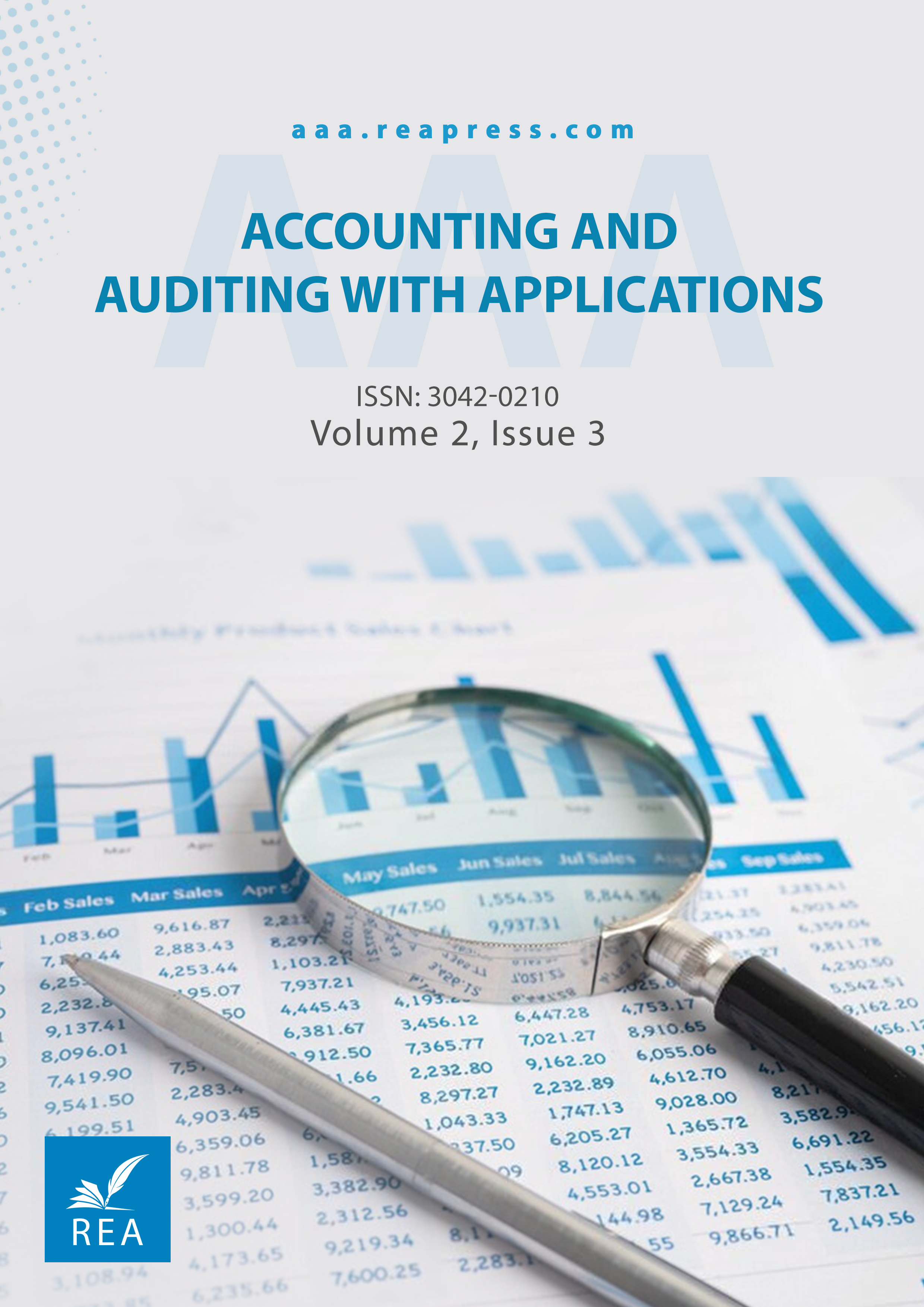A Novel Approach to Evaluating Bank Branch Performance: Integrating Financial Ratios and Data Envelopment Analysis (DEA)
Abstract
The banking system has a direct and reciprocal relationship with economic growth; thus, improving the efficiency of banks contributes significantly to sustainable economic development. Efficiency can be defined in various ways—for instance, a fully efficient organization utilizes 100% of its potential. Efficiency is typically assessed from technical, allocative, and economic perspectives, using both basic and advanced methods. In manufacturing firms, final outputs are usually tangible and well-defined. However, in the banking sector, outputs are less concrete and depend on how a bank’s role is conceptualized. Two major perspectives define the function of banks: first, as financial intermediaries—where inputs include labor, capital, and deposits, and outputs comprise loans and other income-generating assets; and second, as service providers—where inputs remain labor and capital, but outputs include deposits, loans, and other financial services. This study evaluates the efficiency of bank branches using two distinct approaches: financial ratios and Data Envelopment Analysis (DEA). The findings highlight and compare the strengths and limitations of each method, providing a comprehensive view of branch performance.
Keywords:
Data envelopment analysis, Efficiency evaluation, Input-output identification, Bank branches, Financial ratiosReferences
- [1] Kashanipoor, M., & Ghazizadeh, M. (2009). Identifying effective influency variables and ratios on measuring the bank branches efficiency. Journal of daneshvar behavior, 15(32), 93. (In Persian). https://www.magiran.com/p729366
- [2] Shabahang, R. (2015). Financial Management. (In Persian). Auditing organization. https://www.gisoom.com/book/11140260/
- [3] Whittington, G. (1980). Some basic properties of accounting ratios. Journal of business finance and accounting, 7(2), 219–232.
- [4] Barnes, P. (1987). The analysis and use of financial ratios: A review article. Journal of business finance & accounting, 14(4), 449–461.
- [5] Oral, M., & Yolalan, R. (1990). An empirical study on measuring operating efficiency and profitability of bank branches. European journal of operational research, 46(3), 282–294. https://doi.org/10.1016/0377-2217(90)90002-S
- [6] Al-Shammari, M., & Salimi, A. (1998). Modeling the operating efficiency of banks: A nonparametric methodology. Logistics information management, 11(1), 5–17. https://doi.org/10.1108/09576059810202196
- [7] Farrell, M. J. (1957). The measurement of productive efficiency. Journal of the royal statistical society series a: Statistics in society, 120(3), 253–281. https://doi.org/10.2307/2343100
- [8] Charnes, A., Cooper, W. W., & Rhodes, E. (1978). Measuring the efficiency of decision making units. European journal of operational research, 2(6), 429–444. https://doi.org/10.1016/0377-2217(78)90138-8
- [9] Emrouznejad, A., & Yang, G. (2018). A survey and analysis of the first 40 years of scholarly literature in DEA: 1978–2016. Socio-economic planning sciences, 61, 4–8. https://doi.org/10.1016/j.seps.2017.01.008
- [10] Aigner, D., Lovell, C. A. K., & Schmidt, P. (1977). Formulation and estimation of stochastic frontier production function models. Journal of econometrics, 6(1), 21–37. https://doi.org/10.1016/0304-4076(77)90052-5
- [11] Salas, Mb., Lamothe, P., Delgado, E., Fernández-Miguélez, A. L., & Valcarce, L. (2024). Determinants of nonperforming loans: A global data analysis. Computational economics, 64(5), 2695–2716. https://doi.org/10.1007/s10614-023-10543-8
- [12] Glynn, J. J. (1996). Performance auditing and performance improvement in government: Public sector management reform, changing accountabilities and the role of performance audit. Performance auditing and the modernisation of government, 125–136.
- [13] Sato, H. (2024). Overview of banking supervisory history: Necessity and implications of study on global banking supervision regarding the bank of England and Basel committee. Kanazawa University, Faculty of Economics and Management. https://keikei.w3.kanazawa-u.ac.jp/DP/DP86.pdf
- [14] Hanif, M. (2024). Performance evaluation of Islamic Banking services industry: Evidence from GCC. Journal of risk and financial management, 17(11), 523. https://doi.org/10.3390/jrfm17110523
- [15] Barrett, C. J., & Naftan, D. (1998). Interpretation of banks’ reports and financial statements. Tehran, Iran: Monetary & Banking Research Institute.
- [16] Minh, N. T., Tho, T. N., & Tuan, N. H. (2022). Liquidity risk, macroprudential regulation and bank performance: Empirical evidence from Vietnamese commercial banks. Journal of international economics and management, 22(2), 1–24. https://doi.org/10.38203/jiem.022.2.0045
- [17] Nikbakht, M. R., & Pourheidari, O. (2003). Investigating and explaining managers’ information needs and priorities in making decisions on long-term projects. The iranian accounting and auditing review, 10(31), 10-17. (In Persian). https://www.magiran.com/p643185
- [18] Adel, A., & Memariani, A. (1995). AHP: A new technique for group decision making. Management knowledge quarterly. (In Persian). https://jmk.ut.ac.ir/article_15976_0.html?lang=en
- [19] Banker, R. D., Charnes, A., & Cooper, W. W. (1984). Some models for estimating technical and scale inefficiencies in data envelopment analysis. Management science, 30(9), 1078–1092. https://doi.org/10.1287/mnsc.30.9.1078
Downloads
Published
Issue
Section
License
Copyright (c) 2024 Accounting and Auditing with Applications

This work is licensed under a Creative Commons Attribution 4.0 International License.


